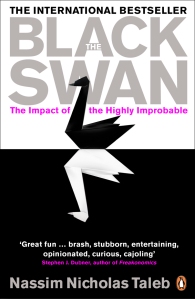Last year, Energy Secretary Jericho Petilla announced the looming power shortage of roughly 800 megawatts, which would take place during the summer months. This prompted the Energy Secretary to ask the president to seek emergency powers from the Congress. Under the Energy Power Industry Reform Act or EPIRA, the president can search for additional power supply with the authority of the Congress.
The Energy Department is also beefing up on its interruptible load program, asking private entities to use generators during peak hours to free up the load on the grid.
The impending power crisis and the request for emergency powers have revived talks of repealing the EPIRA, which was enacted in 2001 by the Arroyo administration–an offshoot of the policies crafted during the term of President Fidel Ramos.
The expected power shortage is nowhere near what we experienced in the 1990s, and yet, it renews debates about the country’s power supply situation, as well as other issues concerning energy.
The same questions about the power sector are being asked once more such as is it time to scrap EPIRA law? Has EPIRA achieved its objective of de-regulating the industry to promote a more competitive market that drives energy costs down? Was the Ramos administration correct in its handling of the power crisis in the 1990s or his policies resulted in higher electricity rates and lack of supply? These are some of the topics that are once again under discussion.
As such, I wish to share some of my thoughts by providing background and information about the energy sector– insights on the power sector. The articles are not meant to join the mounting criticisms on the government’s failure to provide a stable energy supply. Rather, the articles in this blog will provide insights on the complicated sector that is energy.
What went on before – Mindanao Against Darkness (MAD)
It is best to start the discussions by looking back at what happened in the 1990s when rotating black outs was a staple.
At the height of the power crisis in 1990s, Filipinos –especially those who live in Luzon– experienced around eight to ten hours of rotating brown outs daily. Even before the Luzon crisis, however, what got me into the power sector was the Mindanao power crisis of 1990-1991. At that time, El Niño brought in a long drought that effectively brought down the Agus Complex’s normal capacity from slightly over 700 MW to as low as 300 MW. With a peak capacity at that time of around 800 MW, this resulted to a debilitating 10-12 hour power outages in Mindanao.
NPC at that time had no immediate solution to the problem in Mindanao. So we organized various groups first in Cagayan de Oro and eventually throughout Mindanao to help address the power crisis. We launched a movement called “Mindanao Against Darkness” or
MAD, a play on the popular late evening show of Martin Nievera called “Martin After Dark”.
Our two major programs then were: a) Voluntary Load Shedding Program; and b) Trading of electricity using self-generation. The load shedding program was launched to encourage businesses to voluntarily run their generators during the day so that NPC can conserve the water in Lake Lanao during the evening. This way, residences could have power thus giving young families a chance to have their children prepare and study for school.
The first electricity “trade” in the country was probably between Philippine Sinter Corporation located in the PHIVIDEC Industrial Estate in Misamis Oriental, the city of General Santos, through their electric cooperative, SOCOTECO II. At that time, we asked companies with excess generation to share the energy with utilities that were willing to pay the marginal cost of generating that power. We then asked NPC to allow the “transmission” of that power for free (the concept of “wheeling rates” were foreign then.)
The Cory administration recognized these MAD initiatives and eventually expanded the programs to other cities in Mindanao. The idea and concept of a Mindanao Power Corporation were already brought up and presented to the NPC Board then, as well as to the Cabinet. This proposal was seen as the long-term solution for Mindanao – to finally get away from the clutches of “Imperial Manila.
Little did we know then, that the looming power crisis in Luzon beginning 1991 was going to be as bad and probably even worse than the Mindanao power crisis.

Photo from Philstar.com
The Luzon Power Crisis
The Bataan Nuclear Power plant with a generating capacity of 620 megawatts (MW), which was about to start operations was mothballed by President Corazon Aquino due to allegations of corruption in the construction of the said plant. The safety issue – which NPC denied existed at that time – became an issue because the Chernobyl accident of April 1986 happened at that time when the new Cory administration had just taken over. With the leadership of the energy sector decapitated (the department of Energy had been abolished), there was no senior government decision-maker who could stand up to support the opening of the BNPP.
Likewise, the Calaca Coal fire plants were not allowed to be built because the new-found democracy under the Cory administration had to listen to the complaints of various interest groups especially environmental NGOs. The ensuing delay in the construction of the new coal-fired power plants forced the NPC to run its aging power plants. These two major decisions of President Cory Aquino’s cabinet subsequently gave NPC no choice but to postpone the needed maintenance of other existing power plants.
And the inevitable happened—the plants broke down and could not continue their operations. Unfortunately, the Aquino administration failed to provide alternative sources of power. The result was a big power supply deficit resulting in a full blown power crisis
Ironically, the only reason the outages in Metro Manila were not longer than 12 hours was the fact that the economy had stalled as a result of the coup de e’tats that marked the last years of Cory’s term. From a GNP growth of around 6.7% in 1988, this dropped to around 5.7% in 1989 and plummeted to a mere 3% in 1990.
How bad was the power shortage? The Luzon grid, for example, only had an available capacity of 2,300 to 3,100 MW, far less than the installed capacity of 4,321 megawatts. Likewise in Mindanao, the installed capacity was 1053 megawatts, but the available capacity was 600 less than the installed capacity of 1053.
The debt of NPC was growing, too. Between 1987 and 1990 the organization’s revenue losses totaled to P418.63 million. It has accumulated losses of 2.4 billion pesos in 1990 to 1991, which meant that it cannot self-finance and generate enough profits—to cover the demand for investment.
There was a reason for these accumulated losses of NPC. Prior to Cory’s administration, NPC’s tariff was linked to the dollar, as well as other foreign currencies based on its borrowings. Since NPC did not have any regulator, it could, in theory, borrow all the fund funds it needed for as long as the tariff currency mix reflected that of its debt mix.
For some reason (most likely political), NPC delinked its tariff to the dollar and other foreign currencies. Almost immediately after, the peso devalued against the dollar. From 1988 to 1990, the peso devalued something like 25%. The cost of fuel went up from US$18/barrel in 1989 to almost US$32/barrel by 1990 (before falling again) causing a double whammy – it increased costs and devalued the peso. And for the first time in its history, the NPC lost money in 1990 and1991.
The Ramos Administration then was faced with two major challenges. First, there was not enough power; and second, NPC finances were shattered. These twin problems limited severely the options that the Ramos Administration could explore.
Of course, the power shortages had its effect in the country’s economy. According to estimates of the Asian Development Bank, the power crisis from 1989 to 1990 led to a decrease of 6% in the country’s gross domestic product. After all, the unstable power supply caused havoc among industrial centers with some cutting down their days of operations or worse temporarily closing down.
It was then incumbent upon President Ramos to introduce reforms and provide immediate relief to the Filipinos by finding a solution to the power crisis and address the financial woes of the NPC.
Ramos, in his first state of the nation address asked the Congress to grant him emergency powers to address the power crisis. This was highly contested by some members of the congress who claimed that emergency powers are mere tools for more corruption. But due to the political will of President Ramos, the Congress passed the Republic Act No. 7468, or the Electric Power Crisis
Act of 1993 (also known as the Power Crisis Act) by April of the same year. This allowed the executive branch to enter negotiated contracts to fast track the construction, repair, rehabilitation, improvement or maintenance of power plants, projects and facilities.
The Power Crisis Act also mandated the Philippine Amusement and Gaming Corporation or PAGCOR to provide 10 percent of its annual gross earnings to NPC for five years as a form of subsidy.
Aside from this piece of legislation, there was another factor that helped solve the power crisis quickly–the personal attention provided by President Ramos. He intervened when needed particularly in cases where politics were getting into the way of solving the energy problem. President Ramos’ attentiveness helped in speeding up the power projects, which was crucial in lessening the rotating brown outs within six months time.
The Ramos administration also expanded the Build Operate Transfer law, which shortened the procurement process to entice private sector participation (which we will discuss in a later article.)This gave birth to a considerable number of Independent Power Producers (IPP).
Around $6 billion in investments were generated from the IPPs, thus producing a total of 4,800 megawatts. By 1998, there was already a total of 11,988 MW available for the country broken down as follows:
- 8,619 megawatts in Luzon;
- 1,554 megawatts in the Visayas and
- 1,552 megawatts in Mindanao
54 percent of the total generating capacity came from NPC and the rest from the IPPs.
Likewise, the amendments to the BOT law resulted in seven power projects, providing a total of 900 megawatts of power.
Under the amended BOT law, private entities can enter into several types of contract namely:
- Build-operate- transfer, Build-operate-own (BOO)
- Build-transfer-operate (BTO)
- Build-rehabilitate- operate-transfer (BROT)
- Rehabilitate- operate-maintain (ROM)
- Rehabilitate- operate-lease (ROL)
Under all these schemes, the private sector takes care of the planning, design, construction and maintenance of the power facilities. On the other hand, the government through the National Power Corporation pays the private proponents for a guaranteed off-take of electricity for the specified cooperation period. There were also other programs implemented to address the power shortage.
The Ramos administration created the Voluntary Load Programs where around 1600 business entities arranged their production shift to adjust with the available times with power.
Additionally, the NPC worked on attaining self-sufficiency in power by diversifying the fuel mix of the NPC-owned generation plants, resulting in the exploration and development of the Camago-Malampaya field off northwest of Palawan and promotion of renewable energy – solar, biogas and geothermal.
The Ramos administration also crafted a 30- year energy plan the ELECTRIC POWER INDUSTRY CODE, which, unfortunately, was not passed by the Congress due to lack of time.
References:
Cayabyab, M. http://newsinfo.inquirer.net/639878/luzon-visayas-may-face-800mw-power-shortage-in-2015
Aldaba, R. , Regulatory Policies and Reforms in the Power and Downstream Oil Industries 2004
FVR column in Manila Bulletin
Energy Guidebook by Myrna Velasco
The Energy Report by KPMG 2013-2014. http://www.kpmg.com/Global/en/IssuesAndInsights/ArticlesPublications/Documents/energy-report-philippines.pdf






